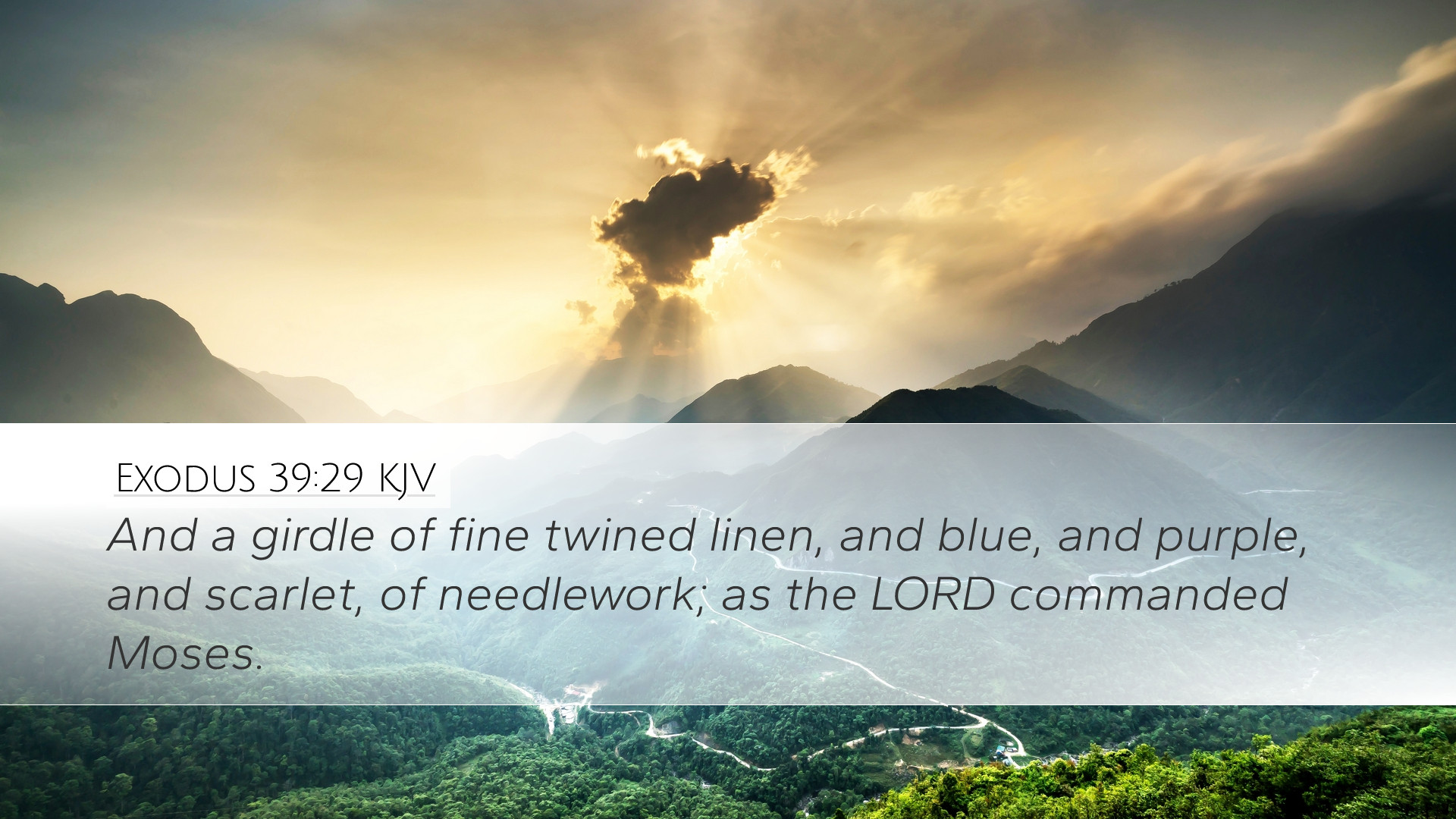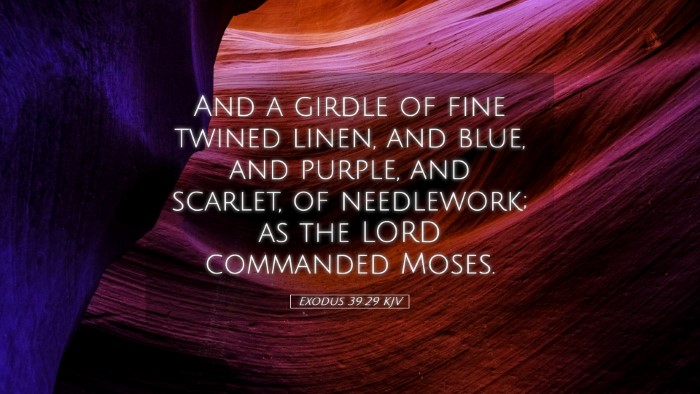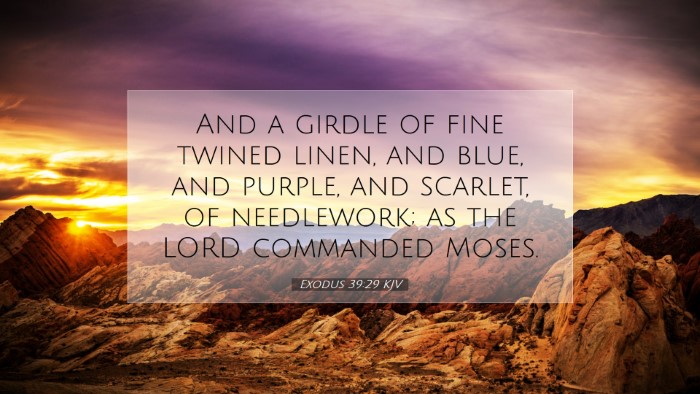Exodus 39:29 - A Commentary Overview
Verse: "And the girdle of the ephod was of gold, and blue, and purple, and scarlet, and fine twined linen; as the Lord commanded Moses."
Contextual Background
This verse falls within the broader context of the construction of the garments for the priesthood, particularly the high priest, in the book of Exodus. The detailed description illustrates not merely the aesthetics of the priestly garments but highlights their significance in the worship of Yahweh and the representation of His people before Him.
Theological Insights
The clothing of the high priest was designed with divine instructions, signifying both responsibility and holiness. Each material and color used in the girdle of the ephod is rich with symbolic meaning:
- Gold: Represents divine purity and the glory of God.
- Blue: Symbolizes heavenly origin and divine revelation.
- Purple: Indicates royalty and sovereignty, pointing to God’s kingship.
- Scarlet: Often associated with sacrifice and atonement for sin.
- Fine twined linen: Represents righteousness and the purity expected from those who come before God.
Commentary Insights
The following insights from esteemed public domain commentaries provide deeper understanding into the significance of Exodus 39:29:
Matthew Henry's Comments
Henry emphasizes that the ephod and its girdle served as a vital representation of mediation between God and the Israelites. He notes that the high priest’s attire was not just for show; it was integral to his function. The combination of colors and materials was divinely appointed, reflecting divine beauty and holiness. Henry mentions that each element served to remind the people of their covenant relationship with God, as well as the high priest's duty to bear the names of the tribes of Israel on his shoulders.
Albert Barnes' Remarks
Barnes provides a detailed examination of the materials listed in Exodus 39:29, connecting them to the attributes of God and the nature of worship. He points out that this was not merely a fashion statement but a manifestation of God's glory and presence among His people. He explains the purpose behind the intricate design and aligns it with the principle of offering one’s best to God in worship, paralleling New Testament themes of set-apart living for God's service.
Adam Clarke's Analyses
Clarke expands on the implications of the high priest's garments, highlighting the necessity for holiness and the distinctiveness of those chosen for sacred duties. He articulates that the rich colors were a testament to God's greatness and majesty. Furthermore, Clarke mentions that the consistency in obeying God’s command illustrates the importance of strict adherence to divine instructions in worship. He propounds that this verse signals the elevation of the priestly office and foreshadows the ultimate sacrificial role of Christ, the High Priest.
Symbolism and Meaning
The multifaceted nature of the garments worn by the high priest serves to inform contemporary readers about the seriousness of approaching God. The intricate description elicits a sense of reverence and awe that is required in the sacred context of worship. The colors, materials, and craftsmanship involved in the creation of the girdle symbolize the essence of God’s relationship with His people—one that is characterized by beauty, holiness, and majestic glory.
Practical Applications
For pastors, students, theologians, and scholars, the insights drawn from Exodus 39:29 provide a meaningful template for understanding the gravity of spiritual leadership and vocational holiness. Pastoral leaders today are called to reflect the glory of God in their lives, much like the high priest's garments aimed to magnify God's holiness before the people.
Key Reflections:
- Emphasizing the fullness of divine revelation through worship.
- Understanding one's role as a mediator in a modern context.
- Recognizing the importance of careful adherence to biblical principles in teaching and leadership.
- Encouraging the community to offer their best in service and worship to God.
Conclusion
Exodus 39:29 serves as a profound reminder of the majesty with which God should be approached and the serious responsibilities entrusted to those who lead in His name. The unity of materials and instructive principles serves not just as historical record but as timeless guidance for worship today.


